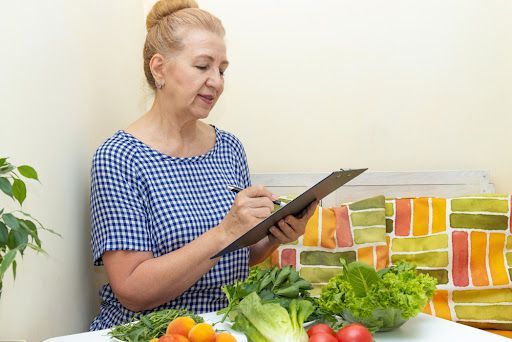Balancing Taste and Nutrition: Caregivers' Strategies for Meal Planning for the Elderly

Meal planning for the elderly can be a challenge, as caregivers must balance their nutritional needs with what they like to eat. It is important to consider the dietary guidelines of seniors when creating a meal plan. These may include reducing or eliminating certain foods, such as fatty or sugary items, increasing fiber and protein intake, and consuming more fruits and vegetables. Additionally, it is important to consider their individual tastes, such as any food likes or dislikes and any special dietary needs they may have.
- Start with a nutrition plan - As previously mentioned, the foundation of meal planning for elderly people should be a nutritional approach. Caregivers should work with dietitians or healthcare providers to create an individualized nutrition plan based on the senior’s health condition and dietary needs. This will ensure they are getting all the essential nutrients they need while avoiding any foods that could be harmful to their health.
- Create a balanced menu - Once you have established the nutritional requirements for the elderly person, create a menu that incorporates those guidelines while still keeping in mind what they like to eat. Be sure to include foods from all major food groups such as grains, fruits and vegetables, dairy products, and lean proteins.
- Allow for flexibility - While it is important to establish a meal plan that meets the nutritional needs of the elderly person, caregivers should also allow for some flexibility. Consider their personal preferences and let them choose from different food options so they can enjoy meals that best fit their taste buds. Additionally, consider seasonal produce when creating meals, as these can help make meals more interesting and flavorful.

- Keep it simple - When creating a meal plan for the elderly person, try to keep it simple and focus on easily prepared foods that don’t require a lot of cooking or preparation. Consider quick and easy recipes such as one-pot dishes, salads, sandwiches, and other simple meals that can be prepared quickly.
- Keep it interesting - It’s important to keep meal planning for the elderly person stimulating by varying flavors and textures of food. Try new recipes or explore different ingredients from various cultural cuisines to add excitement to their meals.
- Monitor and adjust the plan - Finally, caregivers should monitor the meal plan for elderly people to ensure that it is meeting their nutritional needs. Adjustments may need to be made if there are any changes in health conditions or tastes. Additionally, engaging seniors in menu planning can help make them more enthusiastic about their meals.

By following these guidelines, caregivers can ensure that the elderly person is receiving the nutrition they need while still enjoying tasty meals. This will make meal planning for seniors a more enjoyable and rewarding process.
Additional Tip: Caregivers should also be mindful of food safety when preparing meals for the elderly. Always be sure to cook food thoroughly, store leftovers properly, and wash hands before and after handling food. Doing so can help prevent any potential health risks associated with eating.



